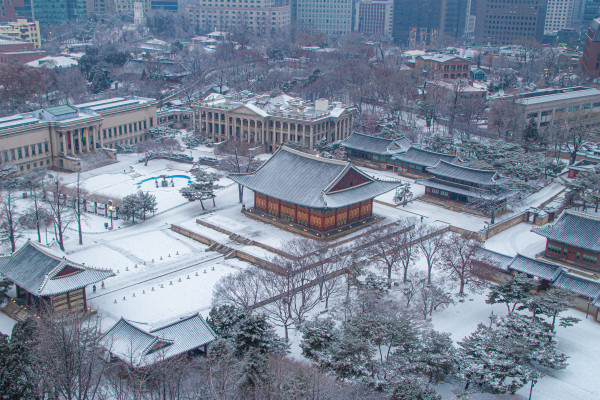Deoksugung
-
Name DeoksugungAddr 99, Sejong-daero, Jung-gu, Seoul
-
Tel 02-771-9951Dist 10.7km
- Transp Take bus number 03 in front of the hotel, get off at Dangsan Station, take subway line 2 (7 stations toward Hongik University entrance), get off at City Hall Station (exit 12), and walk.
- URL
본문

Deoksugung Palace was originally the home of Prince Wolsan (1454-1488), the older brother of King Seongjong, but the palace burned down during the Japanese invasions of 1592 and it began to be used as a temporary palace in 1593. King Seonjo took refuge in Uiju, returned to Hanyang, and stayed at Deoksugung Palace.
In 1897, when Emperor Gojong returned from his official residence in Russia, this place was used again as the royal palace. From then on, it was called Gyeongungung Palace again and its size was expanded again. And after Emperor Gojong abdicated to King Sunjong in 1907 and moved the royal palace to Changdeokgung Palace but he stayed Gyeongungung. From then on, it was called Deoksugung Palace to pray for Emperor Gojong's long life.
Deoksugung Palace is particularly famous for the fact that the unfortunate Emperor Gojong at the end of the Joseon Dynasty was forced to abdicate under pressure from Japan and lived out the rest of his life until he was poisoned by the Japanese and died in Hamnyeongjeon of Deoksugung Palace on January 22, 1919, which was the direct impetus for the 3.1 Independence Movement.
In 1897, when Emperor Gojong returned from his official residence in Russia, this place was used again as the royal palace. From then on, it was called Gyeongungung Palace again and its size was expanded again. And after Emperor Gojong abdicated to King Sunjong in 1907 and moved the royal palace to Changdeokgung Palace but he stayed Gyeongungung. From then on, it was called Deoksugung Palace to pray for Emperor Gojong's long life.
Deoksugung Palace is particularly famous for the fact that the unfortunate Emperor Gojong at the end of the Joseon Dynasty was forced to abdicate under pressure from Japan and lived out the rest of his life until he was poisoned by the Japanese and died in Hamnyeongjeon of Deoksugung Palace on January 22, 1919, which was the direct impetus for the 3.1 Independence Movement.
- Next PostChanggyeonggung Palace